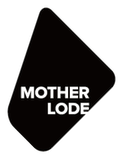How do you market a city using social media?
ACT tourism has launched their “500 Humans” campaign where they will be paying for accommodation, food and activities for 500 Aussies who will get a free holiday in Canberra – all the winners need to do is promote their holiday on their social networks.
Not the most original idea to give away freebies in return for tweets (Cape Town recently did something very similar), but it will no doubt create some initial heat for Canberra. I have to admit I’ve never thought about Canberra as a holiday destination, but only last week I caught up with a couple of old high school mates, one who currently lives in Canberra and one who lived there for a few years and they both raved about it as a great place to live. I’ve been there only once, on a work trip, and the only thing I remember about it was a visit to Blue Poles (which was totally amazing).
Anyhoo… let’s break down the potential value of this campaign.
500 people PLUS their partners or friends they take with them – let’s assume 1000 people – promoting social media to their networks.
If the average person has 190 friends on Facebook and if the average Twitter user has 126 followers, then the potential direct reach of the campaign (not counting retweets, media coverage, etc) is 316 people per winner x 500 winners x 2 (assuming their partner / friend also talks about it on their social networks, a fair assumption for a free holiday) = 316,000 people.
Okay, not bad. What about some caveats:
1. The winners may be chosen from those with the largest about of followers (as you have to provide ACT Tourism with your Twitter account details when you register for the competition). This would of course increase their total reach. However let’s assume for the time being that they aren’t hand-selected from the upper echelons and are just picked at random.
2. There will probably be some overlap between someone’s Twitter followers and Facebook friends, so the total numbers will be, say, 50% less. There will also be some overlap between a couple’s friends and followers, so let’s reduce it by another 20%. 316,000 people x 50% x 80% ≈ 126,000 people.
3. The ABC is calling it a “$1 million campaign”, so let’s assume that’s the budget. If that’s the budget for the holidays alone it would mean they are valued at $1000 per couple, which sounds reasonable if you’re including travel. So… $1 million to reach an estimated 126,000 people ≈ $8 per person. That may seem high when compared to, say, AdWords, but remember these aren’t just eyeballs, these are people recommending Canberra to other friends and followers.
How would you measure the ROI of a campaign like this?
Well obviously they will have a baseline measurement of how many times a month Canberra gets a positive mention on Twitter & Facebook pre-campaign. So they will be able to measure the differential between the baseline and the post-campaign heat.
I assume tourism bureaus know how to measure domestic tourism – accommodation levels, domestic flights, etc – and they will be tracking those numbers looking for a spike attributable to the campaign.
My main question about campaigns like this is how they create a long-term value for the brand. If you are going to spend $1 million on a social media campaign, then you should try to engineer something that will have lasting value – not a short term spike in traffic. How will this campaign keep people talking positively about Canberra as a holiday destination for a year?
Always remember that one of the main goals of a social marketing campaign is usually to create reasons for people to engage with your brand in a long-term conversation. Anyone can throw money at getting some short-term heat, but coming up with reasons for long-term conversations takes a different level of creative thinking.

How do you market a city using social media? Free Canberra Holiday – http://t.co/WfZYnRAf
This is a good article for starter in SEO.